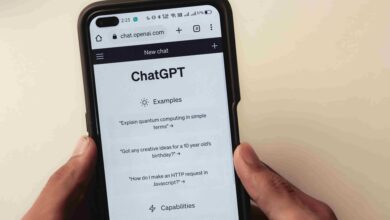Developing a ChatGPT-based Customer Support System for Your Business

1. Enhancing Customer Support with ChatGPT
In today’s fast-paced business landscape, exceptional customer support is crucial for maintaining satisfaction and loyalty as companies strive to meet growing demands. Enter ChatGPT, an advanced NLP model revolutionizing customer support systems by understanding context, generating coherent responses, and automating tasks to enhance interactions and provide timely assistance.
2. Why Choose ChatGPT for Customer Support?
A.. Efficiency:
ChatGPT handles multiple inquiries simultaneously, reducing the workload on human agents and providing quick, accurate responses to improve overall efficiency.
B. Consistency:
Unlike human agents, ChatGPT maintains consistent answers. This ensures a consistent level of service for all customers, regardless of the time or agent.
C. Scalability:
As your business grows, ChatGPT scales effortlessly, enabling you to handle an increasing volume of customer inquiries without hiring additional staff.
D. 24/7 Availability:
ChatGPT operates round the clock, ensuring customers receive support even outside regular business hours.
3. Scope and Limitations of ChatGPT in Customer Support:
ChatGPT, equipped with advanced natural language processing capabilities, is effective for specific customer support tasks but faces limitations in more intricate or sensitive scenarios. ChatGPT’s scope includes efficiently handling FAQs, providing detailed information on products/services, troubleshooting steps, and guiding users through basic technical support tasks. It excels in managing routine interactions, enabling human agents to focus on complex issues. However, ChatGPT struggles with complex problem-solving, which requires deep domain knowledge, emotional understanding, or real-time adaptation to evolving circumstances. It may misinterpret ambiguous queries and lack empathy for delicate situations like customer complaints. To optimize ChatGPT’s effectiveness while mitigating limitations, define use cases clearly, monitor interactions for feedback, implement human oversight for critical issues, and regularly update and retrain the model to address evolving customer needs.
4. Data Preparation and Training:
Data preparation for ChatGPT-based customer support involves gathering diverse datasets from customer queries, support responses, FAQs, and product information sourced from chat transcripts, emails, and knowledge base articles. The data is then preprocessed to remove noise, correct errors, and standardize formatting for consistency. To enhance model accuracy and mitigate biases, efforts ensure a varied representation of query types and customer demographics. Data annotation labels the dataset with query intents (e.g., billing inquiries, technical support) to facilitate supervised learning and improve the model’s ability to understand different query types.
5. Data Augmentation:
Data augmentation is crucial for improving training data diversity in ChatGPT-based customer support systems. Paraphrasing creates varied query versions while preserving meaning, exposing the model to diverse linguistic patterns. Text synthesis modifies text to enrich the dataset with new variations. Integrating domain knowledge improves the model’s grasp of industry-specific terms. Data sampling adjusts distribution for balanced representation, optimizing performance across different use cases.
6. Integration with Customer Channels:
A. Website Integration:
- Use a chat widget to integrate ChatGPT on your website with JavaScript frameworks like React or Vue.js.
- Ensure the chat interface is responsive across different devices for a seamless user experience.
- Implement context-aware features for personalized responses based on user history.
- Mobile App Integration:
- Integrate AI-powered chat functionalities using ChatGPT SDKs for mobile apps.
- Engage users with push notifications for updates and proactive support.
- Enable offline support by caching responses for continuous interactions without the internet.
B. Messaging Services Integration:
- Utilize APIs from messaging platforms (e.g., WhatsApp, Facebook Messenger) for ChatGPT interactions.
- Configure ChatGPT as a bot on messaging platforms to handle user inputs and multimedia content.
- Ensure ChatGPT can process images, videos, and files within messaging platforms.
- Email and Voice Integration:
- Automate email responses with ChatGPT based on predefined rules and natural language processing.
- Integrate ChatGPT with voice-based support systems (e.g., IVR) for conversational interactions via phone or voice assistants.
C. Social Media Integration:
- Use ChatGPT for social media listening and automated responses on platforms like Twitter or LinkedIn.
- Deploy ChatGPT as a chatbot on social media to handle inquiries and engage with customers while maintaining brand voice.
7. Considerations for Compatibility and Scalability:
1. API Management and Authentication:
- Implement secure authentication (e.g., OAuth, API keys) to control access to ChatGPT APIs.
- Set rate-limiting policies to prevent abuse and monitor API usage through logging and monitoring solutions.
2. Data Privacy and Compliance:
- Ensure GDPR and CCPA compliance by encrypting and anonymizing user data handled by ChatGPT.
- Define data retention policies for managing user interactions and conduct regular audits for compliance.
3. Performance Optimization:
- Design efficient ChatGPT APIs to minimize latency and maximize throughput.
- Implement load balancing techniques and plan for horizontal scaling on scalable cloud infrastructure.
4. User Experience (UX) Design:
- Customize UI and conversational flows for different channels to deliver a seamless experience.
- Enhance NLU capabilities for accurate interpretation of user intents and context.
- Implement robust error handling to guide users through unexpected interactions.
8.User Experience and Interface Design:
A. Interface Design:
Creating a user-friendly interface is crucial for optimal interactions with ChatGPT. To design an effective interface for your AI-powered customer support system, focus on a clear layout featuring ChatGPT prominently. Use familiar UI elements like chat bubbles, input fields, and buttons for easy navigation. Ensure responsiveness across devices, optimizing for touch interactions on mobile. Employ visually appealing design elements that reflect your brand and convey professionalism. Implement visual cues such as typing indicators for real-time feedback. Prioritize accessibility by designing for compatibility with assistive technologies using semantic HTML and aria attributes.
B. Conversational Flow Optimization:
Optimizing conversational flow with ChatGPT is essential for natural and engaging interactions. Train ChatGPT to interpret user intents and context using machine learning for continuous NLU improvement. Maintain conversation context by remembering previous inputs and referencing them in responses. Support multi-turn dialogues for coherence and continuity. Implement fallback mechanisms for handling queries ChatGPT cannot process, offering alternative suggestions. Tailor responses based on user preferences using dynamic content generation for personalized experiences.
C. Continuous Improvement:
Regularly evaluate and refine interface design and conversational flow based on user feedback and analytics data. Perform user testing and A/B testing to detect areas for enhancement and iterate on the design to enhance user experience.
9. Scalability and Maintenance:
A. System Design:
Architecting a scalable system is crucial for optimal performance amidst growing user demand. Choose cloud-based platforms such as AWS or Google Cloud with elastic scaling and auto-scaling features to accommodate fluctuating traffic. Implement load balancing to distribute traffic across servers and optimize resource allocation for stability. Design with fault tolerance by incorporating data replication, backups, and disaster recovery for high availability. Adopting a microservices architecture allows independent scaling and deployment of components based on workload demands, enhancing flexibility and scalability.
B. Maintenance Protocols:
Establishing robust maintenance protocols is vital for the long-term performance of a ChatGPT-based customer support system. Define procedures for regular updates, bug fixes, and patches using version control. Schedule periodic model retraining with updated datasets to improve ChatGPT’s performance. Implement monitoring systems for proactive issue detection using tools like Prometheus or ELK stack. Establish incident response procedures to resolve system failures promptly and enhance reliability.
10. Analytics and Insights:
Implementing analytics tools enables businesses to gain insights into customer interactions and system performance. Track user satisfaction metrics like ratings, feedback, and sentiment analysis to assess satisfaction levels and identify service improvements. Measure ChatGPT’s response accuracy using validation datasets and metrics such as precision, recall, and F1-score to evaluate performance. Use these insights to continuously optimize ChatGPT in customer support through hyperparameter tuning and algorithm enhancements, refining support strategies based on customer feedback to enhance the overall user experience.
11. Data Privacy and Compliance:
A. Data Protection Measures:
Implementing strong data protection measures is crucial for safeguarding customer data and maintaining trust. Encrypt sensitive data using industry-standard algorithms (e.g., AES-256) to secure data both at rest and in transit. Implement role-based access controls (RBAC) and least privilege principles to restrict access to customer data based on user roles. Data anonymization techniques like tokenization and hashing can be used to de-identify personally identifiable information (PII) and enhance user privacy.
B. Compliance:
Adhering to legal frameworks ensures responsible handling of customer data and fosters transparency. Obtain explicit consent for data processing, honor data subject rights (e.g., access, rectification), and implement privacy-by-design for GDPR compliance. For CCPA compliance, provide data collection information and opt-out mechanisms and maintain processing records. Maintain transparency on data practices and retention policies and conduct regular audits to ensure compliance.
12. Conclusion
ChatGPT offers transformative benefits for customer support through its efficiency, consistency, scalability, and 24/7 availability. To fully leverage ChatGPT and deliver exceptional support experiences, it’s essential to integrate it strategically, optimize its performance continuously, and adapt to evolving customer needs and challenges. This comprehensive approach ensures that ChatGPT contributes effectively to achieving superior customer service outcomes.
Please find more information about AI and customer support at www.intogeeks.com.




